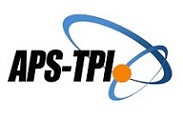Pengaruh Personalized Ubiquitous Learning Dan Self Regulated Learning Terhadap Hasil Belajar Matematika SMP
Abstract
Personalized u-Learning environments can enhance context-aware learning experiences and provide personalized learning opportunities. Personalized u-Learning supports interaction between authentic and digital learning resources. This study tested the learners' u-learning and Self Regulated Learning (SRL) strategies on mathematics learning outcomes in students of Frater Maumere Catholic Junior High School. The study used quasi-experimental design. The research design used is a non-equivalent control group design. The instruments to measure learning outcomes are objective tests and SRL questionnaires (OSLQ) adapted from Barnard to determine the SRL of the subjects studied. The data is then analyzed through the two-way ANOVA technique. The results of the study found several important findings: First, there was a significant difference in the mathematics learning outcomes of students who used the u-learning learning strategy with the e-Learning strategy. Second, there were significant differences in the learning outcomes of groups that had high SRL levels with low SRL levels. Third, there is an interaction of U-learning and e-learning strategies with high SRL and low SRL levels that affect learner learning outcomes.
Abstrak
Lingkungan pembelajaran u-Learning yang dipersonalisasi dapat meningkatkan pengalaman belajar sadar konteks dan memberikan kesempatan belajar personal. Personalized u-Learning mendukung interaksi antara sumber belajar otentik dan digital. Penelitian ini menguji strategi u-learning dan Self Regulated Learning (SRL) pebelajar terhadap hasil belajar matematika pada siswa SMP Katolik Frater Maumere. Penelitian menggunakan kuasi eksperimen (quasi-eksperimental design). Rancangan penelitian yang dipakai adalah non-equivalent control group design. Instrumen untuk mengukur hasil belajar adalah tes objektif dan angket SRL (OSLQ) diadaptasi dari Barnard untuk mengetahui SRL subyek yang diteliti. Data tersebut kemudian dianalisis melalui teknik two-way ANOVA. Hasil penelitian menemukan beberapa temuan penting: Pertama, Ada perbedaan yang signifikan hasil belajar matematika peserta didik yang menggunakan strategi pembelajaran u-Learning dengan strategi e-Learning. Kedua, terdapat perbedaan signifikan dalam hasil belajar kelompok yang memiliki tingkat SRL tinggi dengan tingkat SRL rendah. Ketiga, ada interaksi strategi u-Learning dan e-Learning dengan tingkat SRL tinggi dan SRL rendah yang mempengaruhi hasil belajar pebelajar.
Keywords
Full Text:
PDFReferences
Araújo, R. D., Brant-Ribeiro, T., Mendonça, I. E. S., Mendes, M. M., Dorça, F. A., & Cattelan, R. G. (2017). Social and collaborative interactions for educational content enrichment in ULEs. Educational Technology and Society, 20(3), 133–144.
Asiimwe, E. N., & Khan, S. Z. (2013). Ubiquitous Computing in Education: A SWOT Analysis by Students and Teachers. 1–8. https://doi.org/10.5339/qproc.2013.mlearn.18
Barnard, L., Lan, W. Y., To, Y. M., Paton, V. O., & Lai, S. L. (2009). Measuring self-regulation in online and blended learning environments. Internet and Higher Education, 12(1), 1–6. https://doi.org/10.1016/j.iheduc.2008.10.005
Chang, T. W., El-Bishouty, M. M., Graf, S., & Kinshuk. (2013). Recommendation mechanism based on students’ working memory capacity in learning systems. Proceedings - 2013 IEEE 13th International Conference on Advanced Learning Technologies, ICALT 2013, 333–335. https://doi.org/10.1109/ICALT.2013.103
Cho, M. H., & Shen, D. (2013). Self-regulation in online learning. Distance Education, 34(3), 290–301. https://doi.org/10.1080/01587919.2013.835770
Cynthia, J., Sultana, H. P., Saroja, M. N., & Senthil, J. (2019). Ubiquitous Computing and Computing Security of IoT (Vol. 47). http://link.springer.com/10.1007/978-3-030-01566-4
Elfeky, A. I. M., & Yakoub Masadeh, T. S. (2016). The Effect of Mobile Learning on Students’ Achievement and Conversational Skills. International Journal of Higher Education, 5(3), 20–31. https://doi.org/10.5430/ijhe.v5n3p20
Furió, D., Juan, M. C., Seguí, I., & Vivó, R. (2015). Mobile learning vs. traditional classroom lessons: A comparative study. Journal of Computer Assisted Learning, 31(3), 189–201. https://doi.org/10.1111/jcal.12071
Ghozali, I. (2011). Aplikasi Analisis Multivariate Dengan Program SPSS.
Goos, G., Hartmanis, J., Van Leeuwen, J., Hutchison, D., Kittler, J., Kleinberg, J. M., Mattern, F., Zurich, E., Mitchell, J. C., Naor, M., Steffen, B., Terzopoulos, D., & Tygar, D. (2019). Learning and Collaboration Technologies. Ubiquitous and Virtual Environments for Learning and Collaboration. In Lecture Notes in (Vol. 11591). http://link.springer.com/10.1007/978-3-030-21817-1
Junming, C., & Lu, X. (2019). The Study on Students ’ Participation in Personalized Learning under the Background of Artificial Intelligence. https://doi.org/10.1109/ITME.2019.00131
Kadek Suartama, I., Usman, M., Triwahyuni, E., Subiyantoro, S., Abbas, S., Umar, Hastuti, W. D., & Salehudin, M. (2020). Development of E-learning oriented inquiry learning based on character education in multimedia course. European Journal of Educational Research, 9(4), 1591–1603. https://doi.org/10.12973/EU-JER.9.4.1591
Kerlinger, F. N., & Lee, H. B. (2000). Foundations of behavioral research.
Kramarski, B., & Gutman, M. (2006). How can self-regulated learning be supported in mathematical E-learning environments? Journal of Computer Assisted Learning, 22(1), 24–33. https://doi.org/10.1111/j.1365-2729.2006.00157.x
Lai, C. L., & Hwang, G. J. (2016). A self-regulated flipped classroom approach to improving students’ learning performance in a mathematics course. Computers and Education, 100, 126–140. https://doi.org/10.1016/j.compedu.2016.05.006
Moh. Hadihabibi, Punaji Setyosari, Y. S. (2023). Pengaruh Flipped Classroom Beraktivitas Gamifikasi Tradisional Terhadap Self Regulated Learning Pada Pembelajaran Pemrograman. 6(1), 26–36. https://doi.org/10.17977/um038v6i12023p026
Munawaroh. (2017). The Influence of Teaching Methods and Learning Environment to the Student’s Learning Achievement of Craft and Entrepreneurship Subjects at Vocational High School. International Journal of Environmental & Science Education, 12(4), 665–678.
Nurlia, A. C. A., Kristin, K., Lukas, S., & Sepsiati, S. F. (2022). Keterampilan Belajar Mandiri Pebelajar Program Ilmu Sosial Kelas 11 Saat Pembelajaran Jarak Jauh. JKTP: Jurnal Kajian Teknologi Pendidikan, 5(4), 402. https://doi.org/10.17977/um038v5i42022p402
Odukoya, J. A., Adekeye, O., & Okunlola, O. (2017). Assessing the effectiveness of mobile learning devices in tertiary institutions: The experience of undergraduates in a Nigerian Private University. International Journal of Interactive Mobile Technologies, 11(4), 160–169. https://doi.org/10.3991/ijim.v11i4.6828
Ogata, H., Matsuka, Y., El-Bishouty, M. M., & Yano, Y. (2009). LORAMS: linking physical objects and videos for capturing and sharing learning experiences towards ubiquitous learning. International Journal of Mobile Learning and Organisation, 3(4), 337–350. https://doi.org/10.1504/IJMLO.2009.027452
Orhan, F. (2008). Self-Regulation Strategies Used in a Practicum Course: A Study of Motivation and Teaching Self-Efficacy. Hacettepe University Journal of Education, v35, 251–262.
Paris, S. G., & Winograd, P. (2003). The Role of Self-Regulated Learning in Contextual Teaching: A Commissioned Paper for the U.S. Department of Education Project Preparing Teachers to Use Contextual Teaching and Learning Strategies To Improve Student Success In and Beyond School, 1–24.
Safitri, A., & Lestari, K. E. (2022). Analisis Kelancaran Prosedural Matematis Siswa Berdasarkan Kemandirian Belajar. Jurnal Educatio FKIP UNMA, 8(2), 444–452. https://doi.org/10.31949/educatio.v8i2.1979
Scroll, P., & For, D. (2018). Social-Personalized versus Computer-Personalized Methods to Teaching English Learners ’ Reading Comprehension Ability. 7(3), 287–315. https://doi.org/10.17583/remie.2017.2775
Sereno, M. A. (2018). The impact of a personalized learning framework on student achievement. search.proquest.com. https://search.proquest.com/openview/9c09dfa9f44721f4c0752fbeb2e6542b/1?pq-origsite=gscholar%5C&cbl=18750%5C&diss=y
Tiong Thye Goh. (2010). Multiplatform E-Learning Systems and Technologies: Mobile Devices for Ubiquitous ICT-Based Education. https://doi.org/10.4018/978-1-60566-703-4
Tuckman, B. W., & Harper, B. E. (2012). Conducting Educational Research (6th ed.). Rowman & Littlefi eld Publishers, Inc. www.rowmanlittlefi eld.com
Ulfa, S., Lasfeto, D. B., & Kurniawan, C. (2019). Modelling The Learner Model Based Ontology In Adaptive Learning Environment. Journal of Disruptive Learning Innovation (JODLI), 1(1), 34. https://doi.org/10.17977/um072v1i12019p34-45
Vani, K. T., Ulfa, S., & Kuswandi, D. (2023). Menggunakan Model Seci Untuk Bidang Studi Ips. 6(1), 37–49. https://doi.org/10.17977/um038v6i12023p037
Wardia, W., Setyosari, P., & Ulfa, S. (2022). Efektivitas Penggunaan Game Based Learning Untuk Meningkatkan Hasil Belajar Hukum Bacaan Tanwin Siswa Kelas VII SMP. JKTP: Jurnal Kajian Teknologi Pendidikan, 5(4), 337. https://doi.org/10.17977/um038v5i42022p337
Wu, K., Bian, P., Yang, S., & Tian, H. (2021). Personalized adaptive online learning analysis model based on feature extraction and its implementation Personalized adaptive online learning analysis model based on feature extraction and its implementation. https://doi.org/10.1088/1742-6596/1982/1/012180
Xin, O. K., & Singh, D. (2021). Development of Learning Analytics Dashboard based on Moodle Learning Management System. International Journal of Advanced Computer Science and Applications, 12(7), 838–843. https://doi.org/10.14569/IJACSA.2021.0120793
Yahya, Ahmad, J. (2010). The definition and characteristics of ubiquiteous learning. International Journal of Education and Development Using Information and Communication Technology, 6(1), 117–127.
Zumbrunn, S. (2011). Encourage self regulated learning in the classroom. Journal Virginia Commonwealth University, 278–299. http://scholarscompass.vcu.edu/merc_pubshttp://scholarscompass.vcu.edu/merc_pubs/18%0Ahttp://scholarscompass.vcu.edu/merc_pubs/18
DOI: http://dx.doi.org/10.17977/um038v6i32023p163
Refbacks
- There are currently no refbacks.
Copyright (c) 2023 Marselinus Tonge, Dedi Kuswandi, Saida Ulfa

This work is licensed under a Creative Commons Attribution-ShareAlike 4.0 International License.
JKTP: Jurnal Kajian Teknologi Pendidikan published by Department of Educational Technology, Faculty of Education, State University of Malang in Collaboration with Asosiasi Program Studi Teknologi Pendidikan Indonesia (APS TPI).
Publisher Address:
Lab. Teknologi Pendidikan, Gd.E2, Lt.1
Fakultas Ilmu Pendidikan Universitas Negeri Malang
Jl. Semarang 5, Kota Malang Email: jktp.fip@um.ac.id
========================================================================================================
| INDEXED BY | TOOLS | PLAGIARISM CHECK | ARTICLE TEMPLATE |
|
|

JKTP: Jurnal Kajian Teknologi Pendidikan is licensed under a Creative Commons Attribution-ShareAlike 4.0 International License.
JKTP Statistics (Since July 13th, 2020)





.png)












